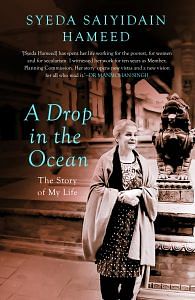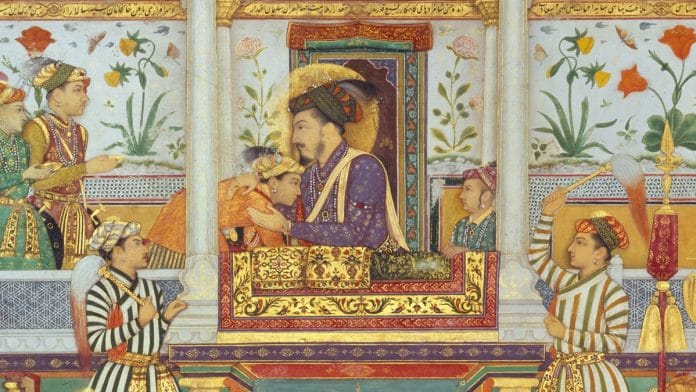I entered the portals of the Indian Council for Cultural Relations (ICCR) in 1986 to start my work on the volumes of Maulana Azad. The ICCR was founded by Maulana Azad in 1950, so it was befitting that his work should be translated within its walls.
I spent countless days at the ICCR library which housed 8,000 volumes Azad had presented to the Council. ‘This is our librarian, Gulzar Naqvi,’ Veena Sikri, the DG ICCR, said as she escorted me to the library which housed Azad’s world-famous collection of books. Gulzar Naqvi, the iconic librarian, introduced me to the two cherished entities of his life: the Azad Collection and Usha, his wife and colleague, who I liked from the moment I saw her. That was the start of a friendship that would last beautifully, seamlessly for life.
In those ICCR days, Gulzar (later I dropped the Sahib, he was just Gulzar, or Gul-o-Gulzar, as he was fondly called by many friends) was my anchor. From showing me Maulana Sahib’s handwritten copy of Tarjuman-ul-Quran to sharing the delicious lunches Usha used to pack for him, his gentle presence brightened my days in that formidable library. When we developed mutual trust he told me, ‘Syeda, I am a mujavar (keeper) of Maulana Sahib’s most precious collection. Sadly, people here neither understand nor care.’ He used to tell me about Maulana Azad’s dream behind the creation of ICCR. I learnt from him Azad’s plan of intellectual exchanges especially with West Asia which resulted in Sanskrit translations of Persian classics and vice versa.
He told me how Azad directed the exchange of scholars from the region to deepen the understanding between and among neighbours. This dream, Gulzar said, had over the years changed to naach gaana; not that there was anything wrong with song and dance but hadn’t the cultural pendulum swung too much on one side, he asked. He gave me references which I read to verify all that he had told me. With his help, I completed my assignment and four volumes on Azad were released on his birth centenary in 1990. An important part of the volumes was a complete Bibliography of Azad by Gulzar Naqvi. On the first page, he wrote a couplet that not only reflected Azad but also him, as we remember him today, in retrospect: Meri tasveer ke ye naqsh zara ghaur se dekh. Inn mein ek daur ki tasveer nazar aaye gi. Look carefully at the contours in my painting. You will see an image of times gone by.
The four volumes published by ICCR appeared in Hindi, Urdu, and English with a message by President R. Venkataraman, who wrote, ‘Azad’s early eclectic training made him a powerful votary of international understanding and world peace. The ICCR of which he was the founder and first president bears shining testimony to his worldview.’
When the volumes were released by Vice President Shankar Dayal Sharma in the presence of Prime Minister V.P. Singh, and the programme was covered by Doordarshan channel, Khushwant Singh’s review appeared the next day in the Hindustan Times, on November 17, 1990: ‘Those who watched Doordarshan coverage of the release of Maulana Abul Kalam Azad’s four volumes of selected writings and speeches by Vice President Shankar Dayal Sharma in the presence of Prime Minister V.P. Singh were shown many dignitaries including Najma Heptullah who has built her political career on her relationship to the Maulana. None of the speakers made any mention of the one person who had laboured for two years to translate and edit these four volumes. Nor did any of the newspapers which carried photographs and texts of the speeches. This often happens in our country; people who do the work are pushed into the rear; people who push themselves in front of cameras and give press conferences steal the credit. The person so callously ignored was Dr. Syeda Saiyidain Hameed.’
Khushwant went on to write: ‘Not many people know that much of the material in these volumes has never appeared in English before. The Maulana was very fussy about letting people handle his writings and refused to let anyone try translating his Ghubar-i-Khaatir because he thought it was untranslatable. Among other incidents in his life, it tells of the Maulana’s love for music (he used to play the sitar sitting on the terrace at the Taj Mahal on moonlit nights) and his love of tea. Syeda has done the job so well that it reads as if it had been originally written in English.’
After the publication of these four volumes, an international conference on the ‘Contemporary Relevance of Sufism’, a subject that deeply interested Maulana Azad was organised by ICCR in 1992. It resulted in a book with the same title in 1993 which I edited.
From all over the world arrived Sufi scholars and practicing Sufis. Thirty years ago, they said some of the same things that are being spoken today. They lamented the growing haplessness of the common person in an increasingly violent global scenario and presented the Sufi Tariqah as the only way to remain sane. It was Azad’s writings more than my personal Sufi background which introduced me to Sufi philosophy.
I had never known this aspect of Azad, but once I knew it, I could see how it was all-pervasive even in his magnum opus Tarjuman-ul- Quran. Although I knew about my own Sufi forefathers, who arrived in India more than 850 years ago during the Sultanate period from Herat, then part of the Persian Empire, it did not touch me at the time in the manner that Azad’s writings did. It was when I read Azad’s essay on Sarmad Shaheed that Sufism in all its splendour opened up before my wonder-struck eyes.
Sarmad, whose Islamic name was Saeed, was an Armenian from Kashan in erstwhile Iran. He came to India as a trader and entered the country through Sind’s famous port city, Thatta.
There, he first experienced temporal love, which brought him closer to the spiritual. He found his way to Shahjehanabad, the seat of the Mughal Empire. It was there that he met Prince Dara Shikoh, the eldest son of Emperor Shah Jahan. It was his inspiration and patronage that led to Prince Dara’s Persian translation of Sanskrit texts, including the Upanishads, which was titled Sirr-i-Akbar (The Great Secret). Sarmad became Dara’s tutor and his influence grew to such an extent that it shook the Mughal Empire. Those were the days that Aurangzeb was plotting his move against his father. Of Dara, Azad writes that the humility with which he met the Muslim divines was matched only by the devotion with which he bowed his head before Hindu saints and sadhus.
A true lover of God is misled. Both by religion and lack thereof. A moth does not choose. Between a burning candle. Whether in the mosque or the temple.
In Aurangzeb’s eyes, Sarmad’s greatest crime was his growing influence among the populace and his closeness to Dara. He desperately needed an excuse for ordering his execution of this Master of Tariqah. What better excuse could he find than the use of the instrument of Fatwa?
Whenever Sarmad was asked to recite the Kalima, he always stopped at the first two words. ‘La Illah’ (There is no God). ‘Say the rest,’ they ordered. ‘I can’t. I am still at the Stage of Denial,’ he replied. The Mullahs then gave their verdict. The executioner moved forward with his sword. Azad writes, ‘These godly men of worldly ways did not understand that Sarmad was far above their pedantic discussions of Kufr and faith. Self-impressed with their writs of execution, they often climbed on the pulpits of their mosques or madrasas to think about the heights to which they had risen and still aspired to rise. But Sarmad had reached the pinnacle of love from which the walls of the mosque and temple are seen standing face to face.’
At the time of his execution, Sarmad was so deeply immersed in his communion with God that he looked up only once. That was the moment when his executioner moved forward, flashing his sword. He is said to have smiled, looked straight at his executioner’s eyes, and spoken the following words: Come, O come I implore you. In whatever guise you come. I know you well.
In his lifetime, Sarmad had never recited the Kalima beyond the first two syllables, ‘La Illah.’ The historian Valeh Daghistani writes that after he was executed, a group of elite passers-by reported that they saw Sarmad’s lips move in recitation of the entire Kalima: ‘La Illaha Illallah…’ (There is no God but God).
Sarmad Shaheed and Maulana Azad are both buried close to each other in front of Jama Masjid, The Saint and the Maulana, the Martyr and the Chronicler. These are little-known aspects of history that need to be remembered today.
 This excerpt from Syeda Hameed’s ‘A Drop in the Ocean: The Story of My Life’ has been published with permission from Speaking Tiger.
This excerpt from Syeda Hameed’s ‘A Drop in the Ocean: The Story of My Life’ has been published with permission from Speaking Tiger.






